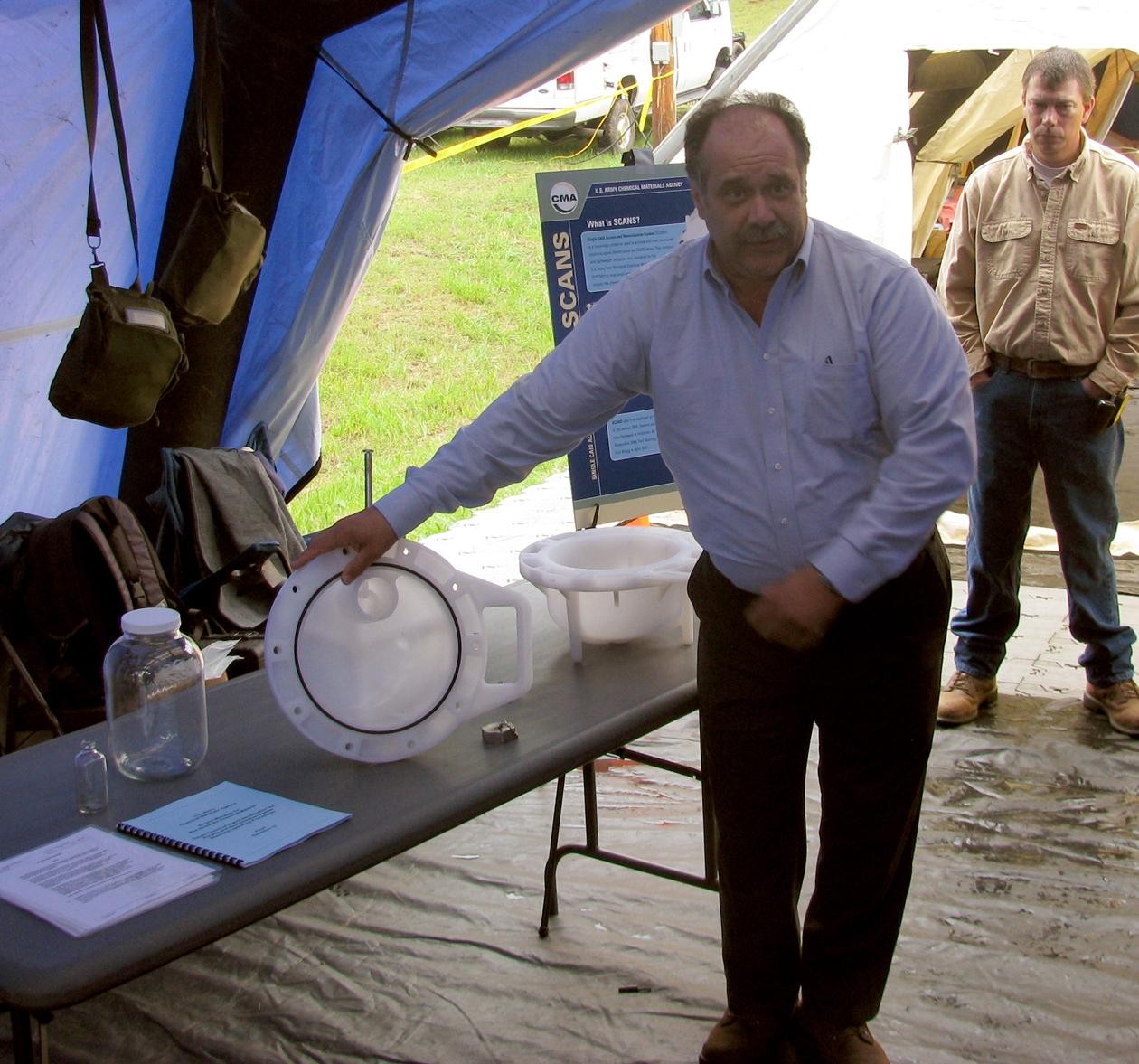Community leaders and emergency services administrators were invited to Redstone on May 13 to see how the Army is disposing of Chemical Agent Identification Sets thought to contain small amounts of diluted liquid mustard chemical agent.
Two steel containers holding 25-32 glass bottles, designed to hold 4 ounces of liquid, were discovered on post in 1994 and 1995. Through X-rays, technicians have determined that some of the bottles inside still contain liquid, while others do not. The bottles date back to the early days of the Arsenal. During World War II, Soldiers used Chemical Agent Identification Sets, comprised of these small bottles, to learn about chemical identification and decontamination. After the war, the Army disposed of these in the accepted manner of the time.
"The old way of doing disposal until the 1970s was to bury it," Garrison commander Col. Bob Pastorelli said. "That's not the way we do things anymore... Now we have the technology to dispose of them."
When the containers were found on Redstone years later, they were stored in a sealed container within a secure bunker until this time. The Single CAIS Access and Neutralization System was designed specifically to safely neutralize and destroy CAIS stores just a few years ago. The system uses neutralizing chemicals to render chemical agents harmless inside a sealed container. When all bottles have been neutralized, the SCAN system contains the waste until the entire thing is destroyed. The bottle's contents are never exposed to the air and the system is destroyed along with the refuse to minimize the potential for contamination.
"This is a system that we have designed, tested, fabricated and put into service for this," Gary Hlavsa, non-stockpile chemical materiel program, said. "The whole purpose of this device is to destroy these CAIS. Once the SCAN unit is sealed, it is never opened again."
Empty bottles will be tested for chemical agents, neutralized and packaged for transport. All hazardous material handling precautions are taken and intensely monitored. The Chemical Materials Agency's Non-Stockpile Chemical Materiel Project, from Aberdeen Proving Ground, Md., has been conducting operations on installations in order of priority since the implementation of SCANs. Three other installations have undergone disposal efforts to date. Now, it's Redstone's turn.
In keeping with the close relationship the Arsenal has with the outside community, local mayors, administrators and emergency service heads were given a tour of the facilities and equipment technicians are using for the project. They were shown everything from sample bottles, monitoring equipment and containers to the SCAN system itself. Any questions or concerns they had were addressed openly.
"We want you to see what we're doing and how we're doing it," Terry Delapaz, chief of the Garrison's Installation Restoration Branch, told the group. "We want you to see the precautions we are taking."
Disposal of Redstone's items began Sunday and will continue for approximately 10 days. After the project completes, the neutralized materials, including the SCANS equipment used, will be transported to an incineration site in Texas for ultimate disposal.




Social Sharing